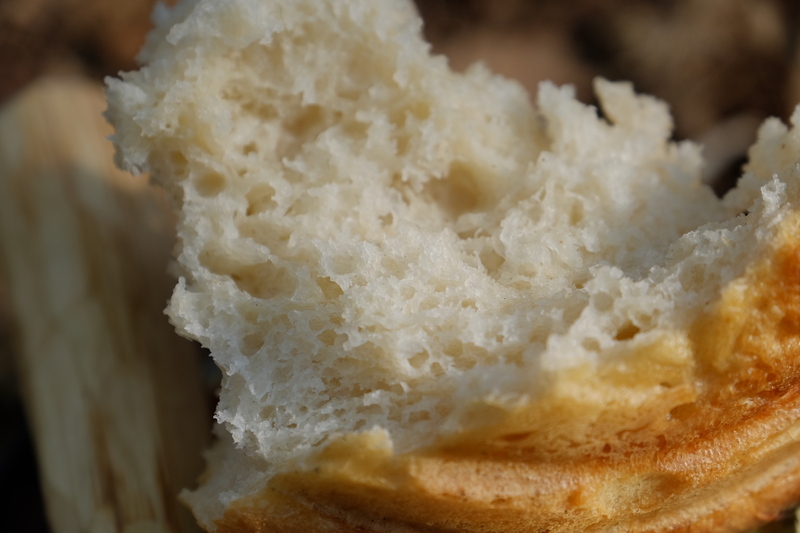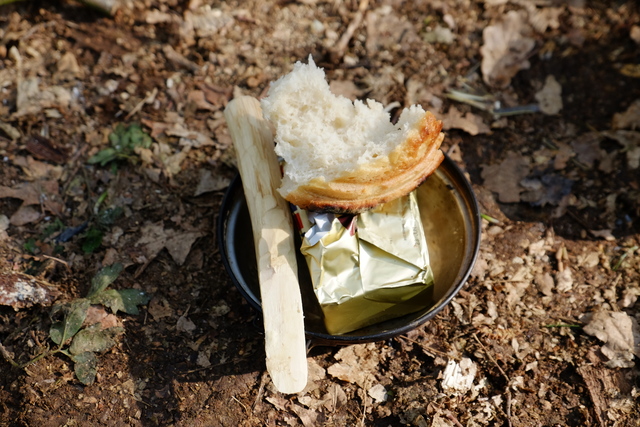Afternoon,
I recently tried to bake some bread in my Tatonka kettles (pots) with limited success and some unfortunate consequences.
I rolled up some aluminum foil and put it in the bottom of a 1.6L kettle to create an air gap. I then placed the smaller 1L kettle inside the 1.6L (on top of this rolled foil). I put some bake-o-glide non-stick paper inside the 1L and put the dough inside this.
I tried it at home on the stove top with great success (though it was slow to cook).
I then tried it on some embers in a camp fire a couple of days ago and completely misjudged the temperature.
The aluminum foil melted and appears to have partially fused to the stainless steel. It also looks like I'm getting some light rust on parts of the stainless steel... (As a side note the bread was good once I'd hacked of the thick black burnt crust).
So my question is:
- When I cook in the future using these pans, do you think traces of aluminum may leach into the food. Should I persist in trying to remove the aluminum, buy new pans or just not worry about it?
- I've tried everything, including wet-and-dry sand paper to remove the aluminum traces with no real success. Any suggestions how to remove them?
- I now understand it's a bad idea to cook with empty pans. Some suggest using rocks as a heat store of sorts. If I try again what suggestions do you have to create an appropriate air gap and prevent damage to the pans?
I've learnt my lesson and will cook on a more gentle heat. Feel a bit foolish but learning through trial and error.
Advice and thoughts much appreciated.
Sent from my Nexus 6 using Tapatalk
I recently tried to bake some bread in my Tatonka kettles (pots) with limited success and some unfortunate consequences.
I rolled up some aluminum foil and put it in the bottom of a 1.6L kettle to create an air gap. I then placed the smaller 1L kettle inside the 1.6L (on top of this rolled foil). I put some bake-o-glide non-stick paper inside the 1L and put the dough inside this.
I tried it at home on the stove top with great success (though it was slow to cook).
I then tried it on some embers in a camp fire a couple of days ago and completely misjudged the temperature.
The aluminum foil melted and appears to have partially fused to the stainless steel. It also looks like I'm getting some light rust on parts of the stainless steel... (As a side note the bread was good once I'd hacked of the thick black burnt crust).
So my question is:
- When I cook in the future using these pans, do you think traces of aluminum may leach into the food. Should I persist in trying to remove the aluminum, buy new pans or just not worry about it?
- I've tried everything, including wet-and-dry sand paper to remove the aluminum traces with no real success. Any suggestions how to remove them?
- I now understand it's a bad idea to cook with empty pans. Some suggest using rocks as a heat store of sorts. If I try again what suggestions do you have to create an appropriate air gap and prevent damage to the pans?
I've learnt my lesson and will cook on a more gentle heat. Feel a bit foolish but learning through trial and error.
Advice and thoughts much appreciated.
Sent from my Nexus 6 using Tapatalk




